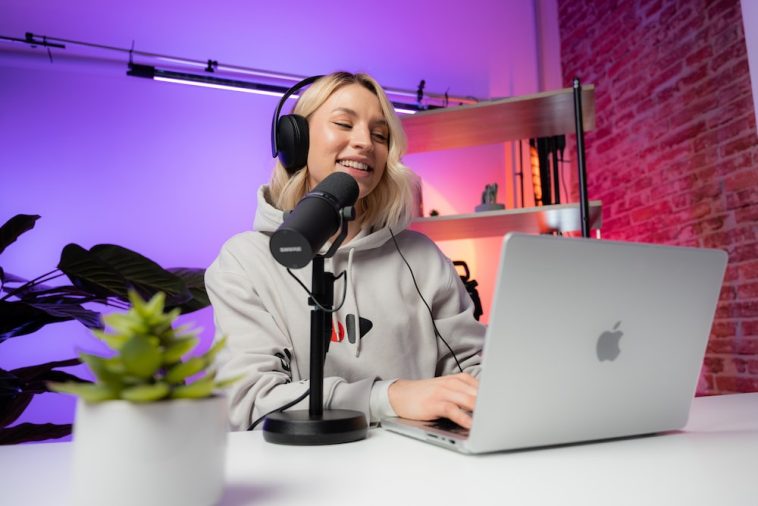Introduction.
Starting a podcast from scratch can feel daunting, especially if you don’t have a built-in audience to jump-start the process.
But the truth is, most podcasters start exactly where you are—without an audience, without experience, and with a lot of questions.
With a clear plan, some basic tools, and a bit of persistence, creating a podcast that people tune into is possible even if no one knows about it yet.
In this guide, I’ll break down the steps to start a podcast without any pre-existing audience. From picking a topic you care about to getting your first listeners, each part of the journey can be manageable and even fun. Let’s dive in.
How Do I Start a Podcast With No Audience?
Step 1: Choose a Topic You Care About.
The first step is finding a topic you genuinely enjoy and can discuss at length. Consider this: will you still be excited about this topic weeks or months into your podcast?
Your enthusiasm will naturally attract listeners who share your interests, and they’ll notice the authenticity of your voice and ideas.
If you’re passionate about cooking, personal finance, or even niche hobbies, focus on that. Remember, the goal is to sustain your interest long enough to build an audience.
Step 2: Research Your Niche and Audience.
Knowing what your target audience might look like helps create relevant and interesting content, even if you don’t have listeners right now.
Find out what potential listeners are interested in by looking at existing podcasts or social media trends.
This can help you find gaps in topics or unique angles to explore. For example, if you’re considering a travel podcast, see if there’s a specific destination or type of travel that doesn’t get much coverage.
Step 3: Plan Your Podcast Format and Structure.
A podcast can have various formats, from interviews to solo commentary or storytelling. Decide what works best for you. Here are some common formats to consider:
- Interview-based: Great for variety, as each guest brings fresh insights.
- Solo commentary: Ideal if you want full creative control and direct engagement with listeners.
- Storytelling: If you have a knack for creating a narrative, this format can help your podcast stand out.
Regardless of your choice, consistency is key. Creating an outline for each episode can help keep your content focused and interesting.
Step 4: Gather Basic Equipment.
The good news is that starting a podcast doesn’t require a studio-grade setup. Here’s what you need to get going:
- Microphone: A USB microphone (like the Audio-Technica ATR2100x) is affordable and produces good sound quality.
- Editing Software: Free software like Audacity or GarageBand can help you edit and refine your episodes.
- Hosting Platform: Hosting services, such as Buzzsprout or Anchor, help distribute your episodes to major platforms like Spotify and Apple Podcasts.
Don’t worry if you’re not an audio expert. Many successful podcasts have humble production beginnings.
Step 5: Record a Few Practice Episodes.
A few test episodes will help you get comfortable with speaking and editing, and they give you a chance to refine your format.
These episodes don’t have to be perfect; just get used to the process. This is also a good time to start getting feedback from friends or family.
Step 6: Launch and Promote Your Podcast.
Once you have a couple of polished episodes, it’s time to launch. While you may not have an audience waiting for your content, there are several ways to get noticed:
- Share on Social Media: Facebook, Instagram, Twitter, and even TikTok are useful for podcast promotion.
- Join Podcasting Communities: Reddit, Facebook Groups, or podcast-specific forums can connect you with others interested in your topic.
- Leverage SEO: Choose a title and episode names with keywords people might search for, like “beginner cooking tips” or “budget travel tips.”
Step 7: Engage with Your Listeners and Encourage Reviews.
As your audience grows, prioritize engagement. Thank listeners, respond to comments, and consider hosting Q&A episodes or inviting listeners to share their own stories.
Reviews on platforms like Apple Podcasts boost visibility, so don’t hesitate to ask your audience to leave feedback.
Pros and Cons of Starting a Podcast With No Audience
Pros:
- Creative Freedom: With no established audience, you have the freedom to experiment with topics, formats, and episode lengths.
- Low Pressure: Starting from scratch means fewer expectations, which can lead to less pressure and a more genuine podcast.
- Skill Building: You’ll gain valuable skills, like editing, speaking, and even marketing, which can be helpful for future projects.
Cons:
- Slow Growth: Without an audience, it might take a while to build up listeners, which requires patience and persistence.
- Initial Learning Curve: From equipment setup to editing, there’s a lot to learn, and mistakes are inevitable.
- Finding Motivation: Without immediate feedback, it can be hard to stay motivated. Remember that building an audience is gradual.
FAQ
Q: How do I know if my topic is interesting to potential listeners?
A: Check out related podcasts, social media groups, or forums. If you see people actively discussing your topic, there’s likely an audience for it. Don’t be afraid to put your spin on it.
Q: Is it expensive to start a podcast?
A: Not necessarily. While professional gear is available, good-quality USB microphones are affordable. Free editing software and podcast hosting platforms are also available to keep costs low.
Q: How long should my episodes be?
A: Aim for 20–40 minutes when starting out. This length is manageable for both recording and editing, and it’s listener-friendly. Over time, you’ll get a feel for what works best for your content.
Q: How many episodes should I launch with?
A: Start with three to five episodes so new listeners have more content to explore right away. This can increase the likelihood of gaining loyal followers from the beginning.
Q: How can I get more listeners over time?
A: Consistency is key. Promote on social media, engage with early listeners, and consider collaborating with other podcasters. Slowly, you’ll start to attract more people interested in your unique voice and perspective.
Conclusion
Starting a podcast with no audience may be challenging, but it’s far from impossible. By focusing on quality content, building connections, and learning as you go, you’ll start to see growth in your listener base. Remember, every big podcast started with zero listeners at some point.
So, what topic would you pick for a podcast, and why?





GIPHY App Key not set. Please check settings